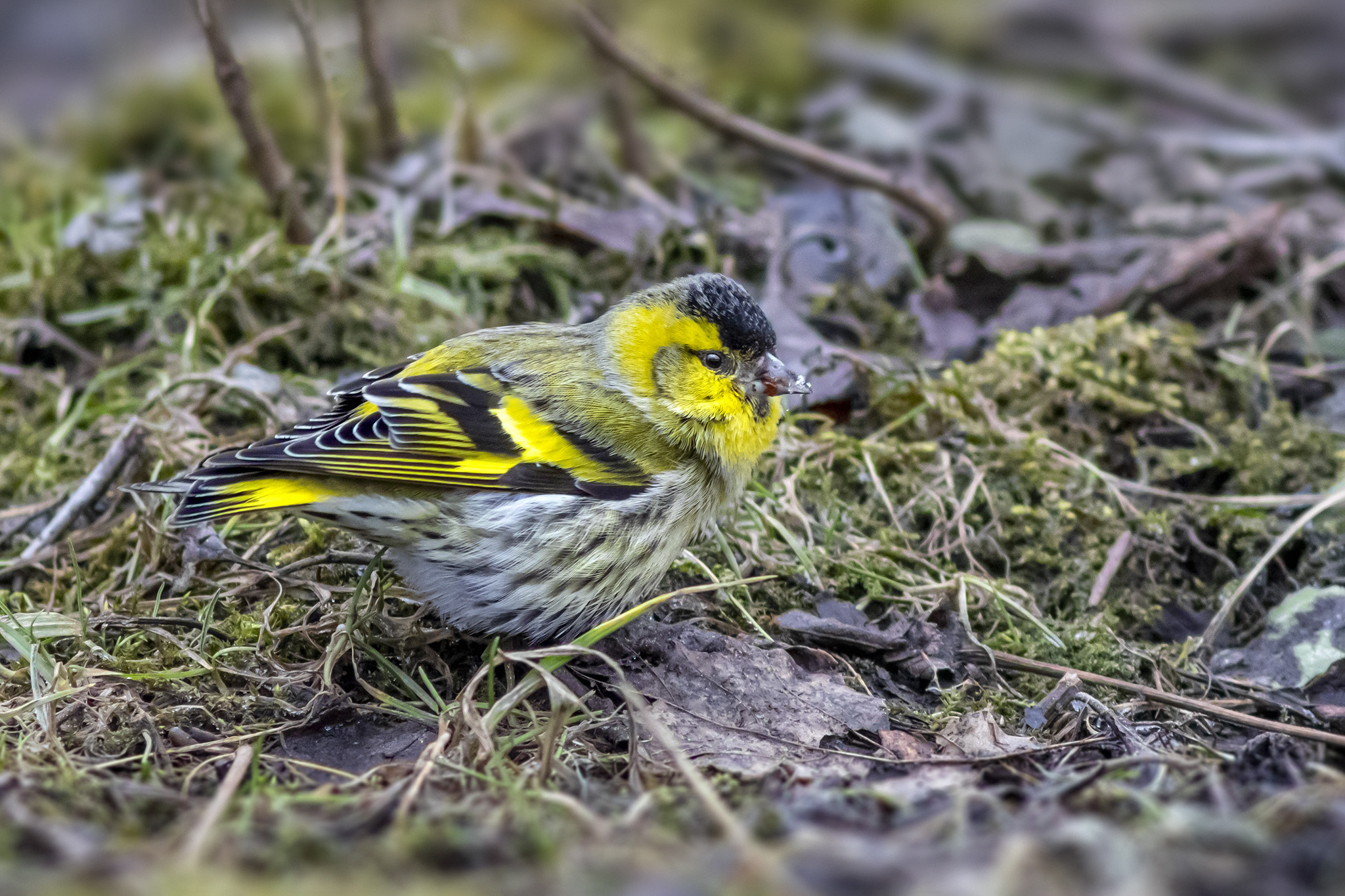The Eurasian Siskin (Spinus spinus) is a small passerine bird belonging to the finch family, Fringillidae. Here’s some information about this species:
- Appearance: Eurasian Siskins are small birds, measuring about 11–12 centimeters (4.3–4.7 inches) in length. They have a distinctive appearance with a forked tail, pointed bill, and yellow-green plumage. Adult males typically have brighter yellow markings on their plumage, especially on the breast and rump, while females and juveniles are more subdued in color.
- Habitat: Eurasian Siskins are primarily found in coniferous and mixed woodlands, particularly those with spruce, pine, and fir trees. They also inhabit parks, gardens, and other areas with dense vegetation, where they can find seeds and insects for food.
- Distribution: The Eurasian Siskin has a wide distribution range across Europe and Asia, including Scandinavia, Russia, Siberia, and parts of the Middle East. They are resident birds in some areas but also undertake seasonal migrations, particularly in northern regions where they may move southward in winter in search of food.
- Diet: Eurasian Siskins are primarily granivorous, feeding on a variety of seeds, especially those of coniferous trees such as spruce and pine. They also consume small insects, particularly during the breeding season when they need additional protein for themselves and their young.
- Breeding: Eurasian Siskins typically breed in spring and summer, building cup-shaped nests in trees or shrubs. The female lays a clutch of eggs, usually 4–6, which she incubates for about 12–14 days. Both parents participate in feeding and caring for the chicks, which fledge after about 14–16 days.
- Song and Vocalization: Eurasian Siskins have a distinctive song, consisting of a series of melodious, flute-like notes. Their calls are sharp and high-pitched, often described as “zee-zee-zee” or “twit-twit-twit.”
- Conservation: The Eurasian Siskin is considered a species of least concern by the International Union for Conservation of Nature (IUCN). While populations may fluctuate due to factors such as habitat loss and changes in food availability, they are generally widespread and abundant throughout their range.
Overall, the Eurasian Siskin is a charming and colorful bird species with a delightful song, making it a favorite among birdwatchers and nature enthusiasts in its native range.
Visited 271 times, 4 visit(s) today
Views: 867
Subscribe to the newsletter:
